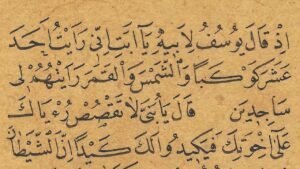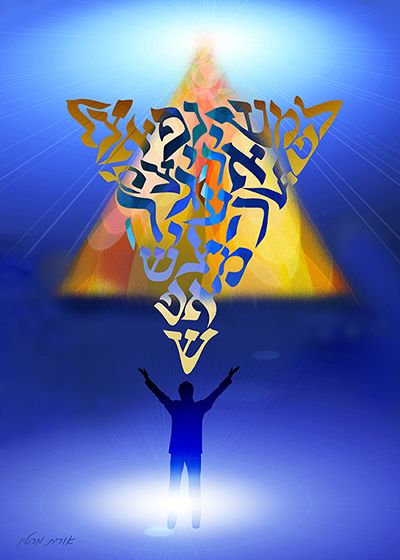
SEAN-O-VISTA
Islam
Sufism: A Mystical Form of Islam
WRITTEN BY Annemarie Schimmel
Former Professor of Indo-Muslim Culture, Harvard University. Author of Gabriel’s Wing; Islamic Calligraphy; and others.
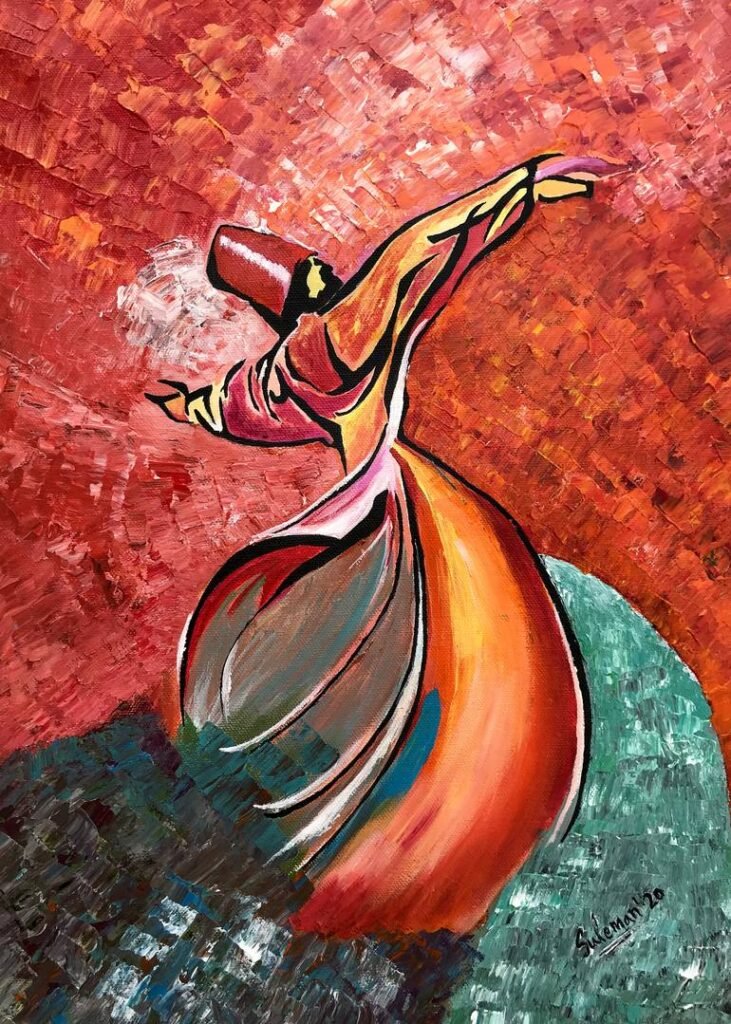
Sufism is less a doctrine or a belief system than an experience and way of life. It is a tradition of enlightenment that carries the essential truth forward through time. Tradition, however, must be conceived in a vital and dynamic sense. Its expression must not remain limited to the religious and cultural forms of the past. The truth of Sufism requires reformulation and fresh expression in every age.
Sufism is a way of life in which a deeper identity is discovered and lived. This deeper identity, beyond the already known personality, is in harmony with all that exists. This deeper identity, or essential self, has abilities of awareness, action, creativity and love that are far beyond the abilities of the superficial personality. Eventually it is understood that these abilities belong to a greater life and being which we individualize in our own unique way while never being separate from it.
Introduction
Sufism, mystical Islamic belief and practice in which Muslims seek to find the truth of divine love and knowledge through direct personal experience of God. It consists of a variety of mystical paths that are designed to ascertain the nature of humanity and of God and to facilitate the experience of the presence of divine love and wisdom in the world.
Islamic mysticism is called taṣawwuf (literally, “to dress in wool”) in Arabic, but it has been called Sufism in Western languages since the early 19th century. An abstract word, Sufism derives from the Arabic term for a mystic, ṣūfī, which is in turn derived from ṣūf, “wool,” plausibly a reference to the woollen garment of early Islamic ascetics. The Sufis are also generally known as “the poor,” fuqarāʾ, plural of the Arabic faqīr, in Persian darvīsh, whence the English words fakir and dervish.
Though the roots of Islamic mysticism formerly were supposed to have stemmed from various non-Islamic sources in ancient Europe and even India, it now seems established that the movement grew out of early Islamic asceticism that developed as a counterweight to the increasing worldliness of the expanding Muslim community; only later were foreign elements that were compatible with mystical theology and practices adopted and made to conform to Islam.
By educating the masses and deepening the spiritual concerns of the Muslims, Sufism has played an important role in the formation of Muslim society. Opposed to the dry casuistry of the lawyer-divines, the mystics nevertheless scrupulously observed the commands of the divine law. The Sufis have been further responsible for a large-scale missionary activity all over the world, which still continues. Sufis have elaborated the image of the Prophet Muhammad—the founder of Islam—and have thus largely influenced Muslim piety by their Muhammad-mysticism. Sufi vocabulary is important in Persian and other literatures related to it, such as Turkish, Urdu, Sindhi, Pashto, and Punjabi. Through the poetry of these literatures, mystical ideas spread widely among the Muslims. In some countries Sufi leaders were also active politically.
History

Islamic mysticism had several stages of growth, including (1) the appearance of early asceticism, (2) the development of a classical mysticism of divine love, and (3) the rise and proliferation of fraternal orders of mystics. Despite these general stages, however, the history of Islamic mysticism is largely a history of individual mystic experience.
The first stage of Sufism appeared in pious circles as a reaction against the worldliness of the early Umayyad period (661–749). From their practice of constantly meditating on the words in the Qurʾān (the Islamic holy book) about Doomsday, the ascetics became known as “those who always weep” and those who considered this world “a hut of sorrows.” They were distinguished by their scrupulous fulfillment of the injunctions of the Qurʾān and tradition, by many acts of piety, and especially by a predilection for night prayers.
Classical mysticism
The introduction of the element of love, which changed asceticism into mysticism, is ascribed to Rābiʿah al-ʿAdawīyah (died 801), a woman from Basra who first formulated the Sufi ideal of a love of Allah (God) that was disinterested, without hope for paradise and without fear of hell. In the decades after Rābiʿah, mystical trends grew everywhere in the Islamic world, partly through an exchange of ideas with Christian hermits. A number of mystics in the early generations had concentrated their efforts upon tawakkul, absolute trust in God, which became a central concept of Sufism. An Iraqi school of mysticism became noted for its strict self-control and psychological insight. The Iraqi school was initiated by al-Muḥāsibī (died 857)—who believed that purging the soul in preparation for companionship with God was the only value of asceticism. Its teachings of classical sobriety and wisdom were perfected by Junayd of Baghdad (died 910), to whom all later chains of the transmission of doctrine and legitimacy go back. In an Egyptian school of Sufism, the Nubian Dhū al-Nūn (died 859) reputedly introduced the technical term maʿ rifah (“interior knowledge”), as contrasted to learnedness; in his hymnical prayers he joined all nature in the praise of God—an idea based on the Qurʾān and later elaborated in Persian and Turkish poetry. In the Iranian school, Abū Yazīd al-Bisṭāmī (died 874) is usually considered to have been representative of the important doctrine of annihilation of the self, fanāʾ; the strange symbolism of his sayings prefigures part of the terminology of later mystical poets. At the same time the concept of divine love became more central, especially among the Iraqi Sufis. Its main representatives are Nūrī, who offered his life for his brethren, and Sumnūn “the Lover.”
The first of the theosophical speculations based on mystical insights about human nature and the essence of the Prophet Muhammad were produced by such Sufis as Sahl al-Tustarī (died c. 896). Some Hellenistic ideas were later adopted by al-Ḥakīm al-Tirmidhī (died 898). Sahl was the master of al-Ḥusayn ibn Manṣūr al-Ḥallāj, who has become famous for his phrase anā al-ḥaqq, “I am the Creative Truth” (often rendered “I am God”), which was later interpreted in a pantheistic sense but is, in fact, only a condensation of his theory of huwa huwa (“He he”): God loved himself in his essence, and created Adam “in his image.” Ḥallāj was executed in 922 in Baghdad as a result of his teachings; he is, for later mystics and poets, the “martyr of Love” par excellence, the enthusiast killed by the theologians. His few poems are of exquisite beauty; his prose, which contains an outspoken Muhammad-mysticism—i.e., mysticism centred on the Prophet—is as beautiful as it is difficult.
In these early centuries Sufi thought was transmitted in small circles. Some of the shaykhs, Sufi mystical leaders or guides of such circles, were also artisans. In the 10th century, it was deemed necessary to write handbooks about the tenets of Sufism in order to soothe the growing suspicions of the orthodox; the compendiums composed in Arabic by Abū Ṭālib Makkī, Sarrāj, and Kalābādhī in the late 10th century, and by Qushayrī and, in Persian, by Hujvīrī in the 11th century reveal how these authors tried to defend Sufism and to prove its orthodox character. It should be noted that the mystics belonged to all schools of Islamic law and theology of the times.
The last great figure in the line of classical Sufism is Abū Hāmid al-Ghazālī (died 1111), who wrote, among numerous other works, the Iḥyāʾ ʿulūm al-dīn (“The Revival of the Religious Sciences”), a comprehensive work that established moderate mysticism against the growing theosophical trends—which tended to equate God and the world—and thus shaped the thought of millions of Muslims. His younger brother, Aḥmad al-Ghazālī, wrote one of the subtlest treatises (Sawāniḥ; “Occurrences” [i.e., stray thoughts]) on mystical love, a subject that then became the main subject of Persian poetry.
Rise of fraternal orders
Slightly later, mystical orders (fraternal groups centring around the teachings of a leader-founder) began to crystallize. The 13th century, though politically overshadowed by the invasion of the Mongols into the Eastern lands of Islam and the end of the ʿAbbāsid caliphate, was also the golden age of Sufism: the Spanish-born Ibn alʿArabī created a comprehensive theosophical system (concerning the relation of God and the world) that was to become the cornerstone for a theory of “Unity of Being.” According to this theory all existence is one, a manifestation of the underlying divine reality. His Egyptian contemporary Ibn al-Fāriḍ wrote the finest mystical poems in Arabic. Two other important mystics, who died c. 1220, were a Persian poet, Farīd al-Dīn ʿAṭṭar, one of the most fertile writers on mystical topics, and a Central Asian master, Najmuddīn Kubrā, who presented elaborate discussions of the psychological experiences through which the mystic adept has to pass.
The greatest mystical poet in the Persian language, Jalāl al-Dīn al-Rūmī (1207–73), was moved by mystical love to compose his lyrical poetry that he attributed to his mystical beloved, Shams al-Dīn of Tabriz, as a symbol of their union. Rūmī’s didactic poem Mas̄navī-yi Maʿnavī in about 26,000 couplets—a work that is for the Persian-reading mystics second in importance only to the Qurʾān—is an encyclopaedia of mystical thought in which everyone can find his own religious ideas. Rūmī inspired the organization of the whirling dervishes—who sought ecstasy through an elaborate dancing ritual, accompanied by superb music. His younger contemporary Yunus Emre inaugurated Turkish mystical poetry with his charming verses that were transmitted by the Bektāshīyyah (Bektaşi) order of dervishes and are still admired in modern Turkey. In Egypt, among many other mystical trends, an order—known as Shādhilīyyah—was founded by al-Shādhilī (died 1258); its main literary representative, Ibn ʿAṭāʾ Allāh of Alexandria, wrote sober aphorisms (ḥikam).
At that time, the basic ideals of Sufism permeated the whole world of Islam; and at its borders as, for example, in India, Sufis largely contributed to shaping Islamic society. Later some of the Sufis in India were brought closer to Hindu mysticism by an overemphasis on the idea of divine unity which became almost monism—a religiophilosophic perspective according to which there is only one basic reality, and the distinction between God and the world (and humanity) tends to disappear. The syncretistic attempts of the Mughal emperor Akbar (died 1605) to combine different forms of belief and practice, and the religious discussions of the crown prince Dārā Shukōh (executed for heresy, 1659) were objectionable to the orthodox. Typically, the countermovement was again undertaken by a mystical order, the Naqshbandīyyah, a Central Asian fraternity founded in the 14th century. Contrary to the monistic trends of the school of waḥdat al-wujūd (“existential unity of being”), the later Naqshbandīyyah defended the waḥdat al-shuhūd (“unity of vision”), a subjective experience of unity, occurring only in the mind of the believer, and not as an objective experience. Aḥmad Sirhindī (died 1624) was the major protagonist of this movement in India. His claims of sanctity were surprisingly daring: he considered himself the divinely invested master of the universe. His refusal to concede the possibility of union between humanity and God (characterized as “servant” and “Lord”) and his sober law-bound attitude gained him and his followers many disciples, even at the Mughal court and as far away as Turkey. In the 18th century, Shāh Walī Allāh of Delhi was connected with an attempt to reach a compromise between the two inimical schools of mysticism; he was also politically active and translated the Qurʾān into Persian, the official language of Mughal India. Other Indian mystics of the 18th century, such as Mīr Dard, played a decisive role in forming the newly developing Urdu poetry.
In the Arabic parts of the Islamic world, only a few interesting mystical authors are found after 1500. They include al-Shaʿrānī in Egypt (died 1565) and the prolific writer ʿAbd al-Ghanī al-Nābulusī in Syria (died 1731). Turkey produced some fine mystical poets in the 17th and 18th centuries. The influence of the mystical orders did not recede; rather new orders came into existence, and most literature was still tinged with mystical ideas and expressions. Political and social reformers in the Islamic countries have often objected to Sufism because they have generally considered it to be backward, hampering the free development of society. Thus, the orders and dervish lodges in Turkey were closed by Kemal Mustafa Atatürk in 1925. Yet, their political influence is still palpable, though under the surface. Such modern Islamic thinkers as the Indian philosopher Muḥammad Iqbāl have attacked traditional monist mysticism and have gone back to the classical ideals or divine love as expressed by Ḥallāj and his contemporaries. The activities of modern Muslim mystics in the cities are mostly restricted to spiritual education.
Sufi Literature
Though a Hadith (a recorded saying of the Prophet Muhammad) claims that “he who knows God becomes silent,” the Sufis have produced a literature of impressive extent and could defend their writing activities with another Hadith: “He who knows God talks much.” The first systematic books explaining the tenets of Sufism date from the 10th century; but earlier, Muḥāsibī had already written about spiritual education, Ḥallāj had composed meditations in highly concentrated language, and many Sufis had used poetry for conveying their experiences of the ineffable mystery or had instructed their disciples in letters of cryptographic density. The accounts of Sufism by Sarrāj and his followers, as well as the ṭabaqāt (biographical works) by Sulamī, Abū Nuʿaym al-Iṣfahānī, and others, together with some biographies of individual masters, are the sources for knowledge of early Sufism.
Early mystical commentaries on the Qurʾān are only partly extant, often preserved in fragmentary quotations in later sources. With the formation of mystical orders, books about the behaviour of the Sufi in various situations became important, although this topic had already been touched on in such classical works as Ādāb al-murīdīn (“The Adepts’ Etiquette”) by Abū Najīb al-Suhrawardī (died 1168), the founder of the Suhrawardīyyah order and uncle of the author of the oft-translated ʿAwārif al-maʿārif (“The Well-Known Sorts of Knowledge”). The theosophists had to condense their systems in readable form; Ibn al-ʿArabī’s al-Futūḥāt al-Makkīyyah (“The Meccan Revelations”) is the textbook of waḥdat al-wujūd (God and creation as two aspects of one reality). His smaller work on the peculiar character of the prophets—Fuṣūṣ al-ḥikam (“The Bezels of Wisdom”)—became even more popular.
Later mystics commented extensively upon the classical sources and, sometimes, translated them into their mother tongues. A literary type that has flourished especially in India since the 13th century is the malfūẓāt, a collection of sayings of the mystical leader, which are psychologically interesting and allow glimpses into the political and social situation of the Muslim community. Collections of letters of the shaykhs are similarly revealing. Sufi literature abounds in hagiography consisting of one of three types: biographies of all known saints from the Prophet Muhammad to the day of the author, biographies of saints of a specific order, and biographies of those who lived in a certain town or province. Much information on the development of Sufi thought and practice is available if sources are critically sifted.
The greatest contribution of Sufism to Islamic literature, however, is poetry—beginning with charming, short Arabic love poems (sometimes sung for a mystical concert, samāʿ) that express the yearning of the soul for union with the beloved. The love-relation prevailing in most Persian poetry is that between a man and a beautiful youth; less often, as in the writings of Ibn al-ʿArabī and Ibn al-Fāriḍ, eternal beauty is symbolized through female beauty; in Indo-Muslim popular mystical songs the soul is the loving wife, God the longed-for husband. Long mystic–didactic poems (mas̄nawīs) were written to introduce the reader to the problems of unity and love by means of allegories and parables. After Sanāʾī’s (died 1131?) Ḥadīqat al-ḥaqīqah wa sharīʿat ạt-ṭariqah (“The Garden of Truth and the Law of Practice”), came ʿAṭṭar’s Manṭeq al-ṭeyr (“The Conference of the Birds”) and Rūmī’s Mas̄navī-ye maʿnavī (“Spiritual Couplets”). These three works are the sources that have furnished poets for centuries with mystical ideas and images. Typical of Sufi poetry is the hymn in praise of God, expressed in chains of repetitions.
The mystics also contributed largely to the development of national and regional literatures, for they had to convey their message to the masses in their own languages: in Turkey as well as in the Punjabi-, the Sindhi-, and the Urdu-speaking areas of South Asia, the first true religious poetry was written by Sufis, who blended classical Islamic motifs with inherited popular legends and used popular rather than Persian metres. Sufi poetry expressing divine love and mystical union through the metaphors of profane love and union often resembled ordinary worldly love poetry, and nonmystical poetry made use of the Sufi vocabulary, thus producing an ambiguity that is felt to be one of the most attractive and characteristic features of Persian, Turkish, and Urdu literatures. Sufi ideas thus permeated the hearts of all those who hearkened to poetry. An example is al-Ḥusayn ibn Manṣūr al-Ḥallāj, the 10th-century martyr-mystic, who is as popular in modern progressive Urdu poetry as he was with the “God-intoxicated” Sufis; he has been converted into a symbol of suffering for one’s ideals.
Sufi Thought And Practice

Important aspects
The mystics drew their vocabulary largely from the Qurʾān, which for Muslims contains all divine wisdom and has to be interpreted with ever-increasing insight. In the Qurʾān, mystics found the threat of the Last Judgment, but they also found the statement that God “loves them and they love him,” which became the basis for love-mysticism. Strict obedience to the religious law and imitation of the Prophet were basic for the mystics. By rigid introspection and mental struggle, the mystic tried to purify his baser self from even the smallest signs of selfishness, thus attaining ikhlāṣ, absolute purity of intention and act. Tawakkul (trust in God) was sometimes practiced to such an extent that every thought of tomorrow was considered irreligious. “Little sleep, little talk, little food” were fundamental; fasting became one of the most important preparations for the spiritual life.
The central concern of the Sufis, as of every Muslim, was tawḥīd, the witness that “there is no deity but God.” This truth had to be realized in the existence of each individual, and so the expressions differ: early Sufism postulated the approach to God through love and voluntary suffering until a unity of will was reached; Junayd spoke of “recognizing God as He was before creation”; God is seen as the One and only actor; He alone “has the right to say ‘I’.” Later, tawḥīd came to mean the knowledge that there is nothing existent but God, or the ability to see God and creation as two aspects of one reality, reflecting each other and depending upon each other (waḥdat al-wujūd).
The mystics realized that beyond the knowledge of outward sciences intuitive knowledge was required in order to receive that illumination to which reason has no access. Dhawq, direct “tasting” of experience, was essential for them. But the inspirations and “unveilings” that God grants such mystics by special grace must never contradict the Qurʾān and tradition and are valid only for the person concerned. Even the Malāmatīs, who attracted public contempt upon themselves by outwardly acting against the law, in private life strictly followed the divine commands. Mystics who expressed in their poetry their disinterest in, and even contempt of, the traditional formal religions never forgot that Islam is the highest manifestation of divine wisdom.
The idea of the manifestation of divine wisdom was also connected with the person of the Prophet Muhammad. Though early Sufism had concentrated upon the relation between God and the soul, from 900 onward a strong Muhammad-mysticism developed. In the very early years, the alleged divine address to the Prophet—“If thou hadst not been I had not created the worlds”—was common among Sufis. Muhammad was said to be “Prophet when Adam was still between water and clay.” Muhammad is also described as light from light, and from his light all the prophets are created, constituting the different aspects of this light. In its fullness such light radiated from the historical Muhammad and is partaken of by his posterity and by the saints; for Muhammad has the aspect of sanctity in addition to that of prophecy. An apocryphal tradition makes even God attest: “I am Aḥmad (= Muhammad) without ‘m’ (i.e., Aḥad, ‘One’).”
A mystic may also be known as walī. By derivation the word walī (“saint”) means “one in close relation” or “friend.” The awlīyāʾ (plural of walī) are “friends of God who have no fear nor are they sad.” Later the term walī came to denote the Muslim mystics who had reached a certain stage of proximity to God, or those who had reached the highest mystical stages. They have their “seal” (i.e., the last and most perfect personality in the historical process; with this person, the evolution has found its end—as in Muhammad’s case), just as the prophets have. Female saints are found all over the Islamic world.
The invisible hierarchy of saints consists of the 40 abdāl (“substitutes”; for when any of them dies another is elected by God from the rank and file of the saints), seven awtād (“stakes,” or “props,” of faith), three nuqabāʾ (“leader”; “one who introduces people to his master”), headed by the quṭb (“axis, pole”), or ghawth (“help”)—titles claimed by many Sufi leaders. Saint worship is contrary to Islam, which does not admit of any mediating role for human beings between humanity and God; but the cult of living and even more of dead saints—visiting their tombs to take vows there—responded to the feeling of the masses, and thus a number of pre-Islamic customs were absorbed into Islam under the cover of mysticism. The advanced mystic was often granted the capacity of working miracles called karāmāt (charismata or “graces”), although not muʿjizāt (“that which men are unable to imitate”), like the miracles of the prophets. Among them are “cardiognosia” (knowledge of the heart), providing food from the unseen, presence in two places at the same time, and help for the disciples, be they near or far. In short, a saint is one “whose prayers are heard” and who has taṣarruf, the power of materializing in this world possibilities that still rest in the spiritual world. Many great saints, however, considered miracle working as a dangerous trap on the path that might distract the Sufi from his real goal.
The Path

The path (ṭarīqah) begins with repentance. A mystical guide (shaykh or pīr) accepts the seeker as disciple (murīd), orders him to follow strict ascetic practices, and suggests certain formulas for meditation. It is said that the disciple should be in the hands of the master “like a corpse in the hand of the washer.” The master teaches him constant jihad, or struggle (the real “Holy War”), against the lower soul, often represented as a black dog, which should, however, not be killed but merely tamed and used in the way of God. The mystic dwells in a number of spiritual stations (maqām), which are described in varying sequence, and, after the initial repentance, comprise abstinence, renunciation, and poverty—according to Muhammad’s saying, “Poverty is my pride”; poverty was sometimes interpreted as having no interest in anything apart from God, the Rich One, but the concrete meaning of poverty prevailed, which is why the mystic is often denoted as “poor,” fakir or dervish. Patience and gratitude belong to higher stations of the path, and consent is the loving acceptance of every affliction.
On his way to illumination the mystic will undergo such changing spiritual states (ḥāl) as qabḍ and basṭ, constraint and happy spiritual expansion, fear and hope, and longing and intimacy, which are granted by God and last for longer or shorter periods of time, changing in intensity according to the station in which the mystic is abiding at the moment. The way culminates in maʿrifah (“interior knowledge,” “gnosis”) or in maḥabbah (“love”), the central subject of Sufism since the 9th century, which implies a union of lover and beloved, and was therefore violently rejected by the orthodox, for whom “love of God” meant simply obedience. The final goal is fanāʾ (“annihilation”), primarily an ethical concept of annihilating one’s own qualities, according to the prophetic saying “Take over the qualities of God,” but slowly developing into a complete extinction of the personality. Some mystics taught that behind this negative unity where the self is completely effaced, the baqāʾ, (“duration, life in God”) is found: the ecstatic experience, called intoxication, is followed by the “second sobriety”—i.e., the return of the completely transformed mystic into this world where he acts as a living witness of God or continues the “journey in God.” The mystic has reached ḥaqīqah (“realty”), after finishing the ṭarīqah (“path”), which is built upon the sharīʿah (“law”). Later, the disciple is led through fanāʾ fī ashshaykh (“annihilation in the master”) to fanāʾ fīar-Rasūl (“annihilation in the Prophet”) before reaching, if at all, fanāʾ fī-Allāh (“annihilation in God”).
One of the means used on the path is the ritual prayer, or dhikr (“remembrance”), derived from the Qurʾānic injunction “And remember God often” (sura [chapter] 62, verse 10). It consists of a repetition of either one or all of the most beautiful names of God, of the name Allah, or of a certain religious formula, such as shahādah (the profession of faith): “There is no God but Allah and Muhammad is his prophet.” The rosary with 99 or 33 beads was in use as early as the 8th century for counting the thousands of repetitions. One’s whole being should eventually be transformed into remembrance of God.
In the mid-9th century some mystics introduced sessions with music and poetry recitals (samāʿ) in Baghdad in order to reach the ecstatic experience—and since then debates about the permissibility of samāʿ, filling many books, have been written. Narcotics were used in periods of degeneration, and coffee was employed by the “sober” mystics (first by the Shādhilīyyah after 1300).
Besides the wayfarers (sālik) on the path, Sufis who have no master but are attracted solely by divine grace are also found; they are called Uwaysī, after Uways al-Qaranī, the Yemenite contemporary of the Prophet who never saw him but firmly believed in him. There are also the so-called majdhūb (“attracted”) who are often persons generally agreed to be more or less mentally deranged.
Symbolism in Sufism

The divine truth was at times revealed to the mystic in visions, auditions, and dreams, in colours and sounds, but to convey these nonrational and ineffable experiences to others the mystic had to rely upon such terminology of worldly experience as that of love and intoxication—often objectionable from the orthodox viewpoint. The symbolism of wine, cup, and cupbearer, first expressed by Abū Yazīd al-Bisṭāmī in the 9th century, became popular everywhere, whether in the verses of the Arab Ibn al-Fāriḍ, or the Persian ʿIrāqī, or the Turk Yunus Emre, and their followers. The hope for the union of the soul with the divine had to be expressed through images of human yearning and love. The love for lovely boys in which the divine beauty manifests itself—according to the alleged Hadith, “I saw my Lord in the shape of a youth with a cap awry”—was commonplace in Persian poetry. Union was described as the submersion of the drop in the ocean, the state of the iron in the fire, the vision of penetrating light, or the burning of the moth in the candle (first used by Ḥallāj). Worldly phenomena were seen as black tresses veiling the radiant beauty of the divine countenance. The mystery of unity and diversity was symbolized, for example, under the image of mirrors that reflect the different aspects of the divine, or as prisms colouring the pure light. Every aspect of nature was seen in relation to God. The symbol of the soul-bird—in which the human soul is likened to a flying bird—known everywhere, was the centre of ʿAṭṭar’s Manṭeq al-ṭeyr. The predilection of the mystical poets for the symbolism of the nightingale and rose (the red rose = God’s perfect beauty; nightingale = soul; first used by Baqli [died 1206]) stems from the soul-bird symbolism. For spiritual education, symbols taken from medicine (healing of the sick soul) and alchemy (changing of base matter into gold) were also used. Many descriptions that were originally applied to God as the goal of love were, in later times, used also for the Prophet, who is said to be like the “dawn between the darkness of the material world and the sun of Reality.”
Allusions to the Qurʾān were frequent, especially so to verses that seem to imply divine immanence (God’s presence in the world), such as “Whithersoever you turn, there is the Face of God” (sura 2, verse 109), or that God is “closer than your neck vein” (sura 50, verse 8). Sura 7, verse 172—i.e., God’s address to the uncreated children of Adam (“Am I not your Lord” [alastu birabbikum])—came to denote the pre-eternal love relation between God and humanity. As for the prophets before Muhammad, the vision of Moses was considered still imperfect, for the mystic wants the actual vision of God, not his manifestation through a burning bush. Abraham, for whom fire turned into a rose garden, resembles the mystic in his afflictions; Joseph, in his perfect beauty, the mystical beloved after whom the mystic searches. The apocryphal traditions used by the mystics are numerous; such as “Heaven and earth do not contain me, but the heart of my faithful servant contains Me”; and the possibility of a relation between humanity and God is also explained by the traditional idea: “He (God) created Adam in His image.”
Theosophical Sufism
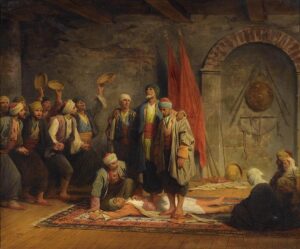
Sufism, in its beginnings a practical method of spiritual education and self-realization, grew slowly into a theosophical system by adopting traditions of Neoplatonism, the Hellenistic world, gnosticism (an ancient esoteric religiophilosophical movement that viewed matter as evil and spirit as good), and spiritual currents from Iran and various countries in the ancient agricultural lands from the eastern Mediterranean to Iraq. One master who contributed to this development was the Persian al-Suhrawardī, called al-Maqtūl (“the Killed”), executed in 1191 in Aleppo. To him is attributed the philosophy of ishrāq (“illumination”), and he claimed to unite the Persian (Zoroastrian) and Egyptian (Hermetic) traditions. His didactic and doctrinal works in Arabic taught, among other things, a complicated angelology (theory of angels); some of his smaller Persian treatises depict the journey of the soul across the cosmos; the “Orient” (East) is the world of pure lights and archangels, the “Occident” (West) that of darkness and matter; and human beings live in the “Western exile.”
At the time of Suhrawardī’s death, the greatest representative of theosophic Sufism was in his 20s: Ibn al-ʿArabī, born at Murcia, Spain, where speculative tendencies had been visible since Ibn Masarrah’s philosophy (died 931). Ibn al-ʿArabī was instructed in mysticism by two Spanish female saints. Performing the traditional pilgrimage to Mecca, he met there an accomplished young Persian woman who represented for him the divine wisdom. This experience resulted in the charming poems of the Tarjumān al-ashwāq (“Interpreter of Yearning”), which the author later explained mystically. Ibn al-ʿArabī composed at least 150 volumes. His magnum opus is al-Futūḥāt al-Makkīyyah (“The Meccan Revelations”) in 560 chapters, in which he expounds his theory of unity of being.
The substance of theosophic Sufism is as follows. According to the Hadith qudsī, or “holy tradition”—“I was a hidden treasure and wanted to be known”—the absolute, or God, yearned in his loneliness for manifestation and created the world by effusing being upon the heavenly archetypes, a “theophany (a physical manifestation of deity) through God’s imaginative power.” The universe is annihilated and created every moment. Every divine name is reflected in a named one. The world and God are said to be like ice and water, or like two mirrors contemplating themselves in each other, joined by a sympathetic union. The Prophet Muhammad is the universal person, the perfect man, the total theophany of the divine names, the prototype of creation. Muhammad is the “word,” each particular dimension of which is identified with a prophet, and he is also the model for the spiritual realization of human possibilities. The mystic has to pass the stages of the Qurʾānic prophets as they are explained in the Fuṣūṣ al-ḥikam until he becomes united with the ḥaqīqa Muḥammadīyyah (the first individualization of the divine in the “Muhammadan Reality”). A human being can have vision only of the form of the faith he professes, and Ibn al-ʿArabī’s oft-quoted verse, “I follow the religion of love wherever its camels turn,” with its seeming religious tolerance means, as the contemporary Islamic scholar Seyyid Hossein Nasr puts it, that “the form of God is for him no longer the form of this or that faith exclusive of all others but his own eternal form which he encounters.” The theories of the perfect man were elaborated by al-Jīlī (died c. 1424) in his compendium Al-insān al-kāmil (“The Perfect Man”) and became common throughout the Muslim world.
Ibn al-ʿArabī’s theosophy has been attacked by orthodox Muslims and mystics of the “sober” school as incongruent with Islam because “a thoroughly monistic system cannot take seriously the objective validity of moral standards.” Even the adversaries of the “greatest master” could not, however, help using part of his terminology. Innumerable mystics and poets propagated his ideas, though they only partly understood them, and this circumstance led also to a misinterpretation of the data of early Sufism in the light of existential monism. Later Persian poetry is permeated by the pantheistic feeling of hama ost (“everything is He”).
Ibn al-ʿArabī’s contemporary in Egypt, the poet Ibn al-Fāriḍ, is usually mentioned together with him; Ibn al-Fāriḍ, however, is not a systematic thinker but a full-fledged poet who used the imagery of classical Arabic poetry to describe the state of the lover in extremely artistic verses and has given, in his Tāʾiyat al-kubrā (“Poem of the Journey”), glimpses of the way of the mystic, using, as many poets before and after him did, for example, the image of the shadow play for the actions of the creatures who are dependent upon the divine playmaster. His unifying experience is personal and is not the expression of a theosophical system.
Sufi Orders
Mystical life was first restricted to the relation between a master and a few disciples; the foundations of a monastic system were laid by the Persian Abū Saʿīd ebn Abī ol-Kheyr (died 1049), but real orders or fraternities came into existence only from the 12th century onward: ʿAbd al-Qādir al-Jīlānī (died 1166) gathered the first and still most important order around himself; then followed the Suhrawardīyyah, and the 13th century saw the formation of large numbers of different orders in the East (for example, Kubrawiyyah in Khwārezm) and West (Shādhiliyyah). Thus, Sufism ceased to be the way of the chosen few and influenced the masses. A strict ritual was elaborated: when the adept had found a master for whom he had to feel a preformed affinity, there was an initiation ceremony in which he swore allegiance (bayʿat) into the master’s hand; similarities to the initiation in Ismāʿīlism, the 9th-century sect, and in the guilds suggest a possible interaction. The disciple (murīd) had to undergo a stern training; he was often ordered to perform the lowest work in the community, to serve the brethren, to go out to beg (many of the old monasteries subsisted upon alms). A seclusion period of 40 days under hard conditions was common for the adepts in most orders.
Investiture with the khirqah, the frock of the master, originally made from shreds and patches, was the decisive act by which the disciple became part of the silsilah, the chain of mystical succession and transmission, which leads back—via Junayd—to the Prophet himself and differs in every order. Some mystical leaders claimed to have received their khirqah directly from al-Khiḍr, a mysterious immortal saint.
In the earliest times, allegiance was sworn exclusively to one master who had complete power over the disciple, controlling each of his movements, thoughts, visions, and dreams; but later many Sufis got the khirqah from two or more shaykhs. There is consequently a differentiation between the shaykh al-tarbiyah, who introduces the disciple into the ritual, forms, and literature of the order, and the shaykh al-ṣuḥbah, who steadily watches him and with whom the disciple lives. Only a few members of the fraternity remained in the centre (dargāh, khānqāh, tekke), close to the shaykh, but even those were not bound to celibacy. Most of the initiated returned to their daily life and partook in mystic services only during certain periods. The most mature disciple was invested as khalīfah (“successor”) to the shaykh and was often sent abroad to extend the activities of the order. The dargāhs were organized differently in the various orders; some relied completely upon alms, keeping their members in utmost poverty; others were rich, and their shaykh was not very different from a feudal lord. Relations with rulers varied—some masters refused contacts with the representatives of political power; others did not mind friendly relations with the grandees.
Discipline and ritual

Each order has peculiarities in its ritual. Most start the instruction with breaking the lower soul; others, such as the later Naqshbandīyyah, stress the purification of the heart by constant dhikr (“remembrance”) and by discourse with the master (ṣuḥbah). The forms of dhikr vary in the orders. Many of them use the word Allah, or the profession of faith with its rhythmical wording, sometimes accompanied by movements of the body, or by breath control up to complete holding of the breath. The Mawlawīs, the whirling dervishes, are famous for their dancing ritual, an organized variation of the earlier samāʿ practices, which were confined to music and poetry. The Rifāʿis, the so-called Howling Dervishes, have become known for their practice of hurting themselves while in an ecstatic state that they reach in performing their loud dhikr. (Such practices that might well degenerate into mere jugglery are not approved by most orders.) Some orders also teach the dhikr khafī, silent repetition of the formulas, and meditation, concentrating upon certain fixed points of the body; thus the Naqshbandīs do not allow any emotional practices and prefer contemplation to ecstasy, perhaps as a result of Buddhist influence from Central Asia. Other orders have special prayers given to the disciples, such as the protective ḥizb al-baḥr (“The protective armour of the sea”; i.e., for seafaring people—then extended to all travelers) in the Shādhilīyyah order. Most of them prescribe for their disciples additional prayers and meditation at the end of each ritual prayer.
Function and role in Islamic society
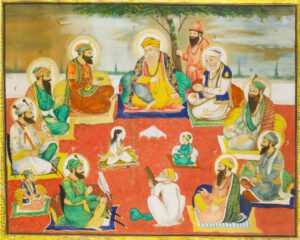
The orders formed an excellent means of bringing together the spiritually interested members of the community. They acted as a counterweight against the influence of hairsplitting lawyer-divines and gave the masses an emotional outlet in enthusiastic celebrations (ʿurs, “marriage”) of the anniversaries of the deaths of founders of mystic orders or similar festivals in which they indulged in music and festivity. The orders were adaptable to every social level; thus, some of them were responsible for adapting a number of un-Islamic folkloristic practices such as veneration of saints. Their way of life often differed so much from Islamic ideals that one distinguishes in Iran and India between orders bā sharʿ (law-bound) and bī sharʿ (not following the injunctions of the Qurʾān). Some orders were more fitting for the rural population, such as the Aḥmadiyyah (after Aḥmad al-Badawī; died 1286) in Egypt. The Aḥmadiyyah, however, even attracted some Mamlūk rulers. The Turkish Bektāshiyyah (Haci Bektaș, early 14th century), together with strange syncretistic cults, showed a prevalence of the ideals of the Shīʿites (the followers of ʿAlī, son-in-law of the prophet Muhammad, whose descendants claimed to be rightful successors to the religious leadership of Islam). The figure of ʿAlī also played a role in other fraternities, and the relations between Sufism in the 14th and 15th centuries and the Shīʿites still have to be explored, as is also true of the general influence of Shīʿite ideas on Sufism. Other orders, such as the Shādhiliyyah, an offshoot of which still plays an important role among Egyptian officials and employees, are typically middle class. This order demands not a life in solitude but strict adherence to one’s profession and fulfillment of one’s duty. Still other orders were connected with the ruling classes, such as, for a time, the Chishtiyyah in Mughal India, and the Mawlawiyyah, whose leader had to invest the Ottoman sultan with the sword. The Mawlawiyyah is also largely responsible for the development of classical Turkish poetry, music, and fine arts, just as the Chishtiyyah contributed much to the formation of classical Indo-Muslim music.
The main contribution of the orders, however, is their missionary activity. The members of different orders who settled in India from the early 13th century attracted thousands of Hindus by their example of love of both God and their own brethren and by preaching the equality of men. Missionary activity was often joined with political activity, as in 17th- and 18th-century Central Asia, where the Naqshbandīyyah exerted strong political influence. In North Africa the Tijāniyyah, founded in 1781, and the Sanūsiyyah, active since the early 19th century, both heralded Islam and engaged in politics; the Sanūsiyyah fought against Italy, and the former king of Libya was the head of the order. The Tijāniyyah extended the borders of Islam toward Senegal and Nigeria, and their representatives founded large kingdoms in West Africa. Their influence, as well as that of the Qādiriyyah, is still an important sociopolitical factor in those areas.
Geographical extent of Sufi orders

It would be impossible to number the members of mystical orders in the Islamic world. Even in such countries as Turkey, where the orders have been banned since 1925, many people still cling to the mystical tradition and feel themselves to be links in the spiritual chains of the orders and try to implement their ideals in modern society. The most widely spread group is, no doubt, the Qādiriyyah, whose adherents are found from West Africa to India—the tomb of ʿAbd al-Qādir al-Jīlānī in Baghdad still being a place of pilgrimage. The areas where the Sanūsiyyah live are restricted to the Maghrib, the Atlas Massif, and the coastal plain from Morocco to Tunisia, whereas the Tijāniyyah have some offshoots in Turkey. Such rural orders as the Egyptian Aḥmadiyyah and Dasūqiyyah (named after Ibrāhīm al-Dasūqī; died 1277) are bound to their respective countries, as are the Mawlawīs and Bektāshiyyah to the realms of the former Ottoman Empire. The Bektāshiyyah had gained political importance in the empire because of its relations with the Janissaries, the standing army. Albania, since 1929, has had a strong and officially recognized group of Bektāshiyyah who were even granted independent status after World War II. The Shaṭṭārīyyah (derived from ʿAbd al-Shaṭṭār; died 1415) extend from India to Java, whereas the Chishtiyyah (derived from Khwājah Muʿīnud-Dīn Chishtīp; died 1236 in Ajmer) and Suhrawardiyyah remain mainly inside the Indo-Pakistan subcontinent. The Kubrāwiyyah reached Kashmir through ʿAlī Hamadānī (died 1385), a versatile author, but the order later lost its influence.
The great variety of possible forms may be seen by comparing the Haddāwah, vagabonds in Morocco, who “do not spoil God’s day by work” and the Shādhiliyyah with a sober attitude toward professional life and careful introspection. Out of the Shādhiliyyah developed the austere Darqāwīyyah, who, in turn, produced the ʿAlāwiyyah, whose master has attracted even a number of Europeans. The splitting up and formation of suborders is a normal process, but most of the subgroups have only local importance. The High Sufi Convent in Egypt counts 60 registered orders.
Significance
Sufism has helped to shape large parts of Muslim society. The orthodox disagree with such aspects of Sufism as saint worship, visiting of tombs, musical performances, miracle mongering, degeneration into jugglery, and the adaptation of pre-Islamic and un-Islamic customs; and the reformers object to the influences of the monistic interpretation of Islam upon moral life and human activities. The importance given to the figure of the master is accused of yielding negative results; the shaykh as the almost infallible leader of his disciples and admirers could gain dangerous authority and political influence, for the illiterate villagers in rural areas used to rely completely upon the “saint.” Yet, other masters have raised their voices against social inequality and have tried, even at the cost of their lives, to change social and political conditions for the better and to spiritually revive the masses. The missionary activities of the Sufis have enlarged the fold of the faithful. The importance of Sufism for spiritual education, and inculcation in the faithful of the virtues of trust in God, piety, faith in God’s love, and veneration of the Prophet, cannot be overrated. The dhikr formulas still preserve their consoling and quieting power even for the illiterate. Mysticism permeates Persian literature and other literatures influenced by it. Such poetry has always been a source of happiness for millions, although some modernists have disdained its “narcotic” influence on Muslim thinking.
Industrialization and modern life have led to a constant decrease in the influence of Sufi orders in many countries. The spiritual heritage is preserved by individuals who sometimes try to show that mystical experience conforms to modern science. Today in the West, Sufism is popularized, but the genuinely and authentically devout are aware that it requires strict discipline, and that its goal can be reached—if at all—as they say, only by throwing oneself into the consuming fire of divine love.
More About Religion
Features
Copyright © 2018 SEAN-O-VISTA

Powered with 

